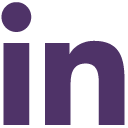Mitigate Risk, Lead with Clarity
|
|
|
PROJECT FORWARD | TOP 10 PLAYBOOK
Priorities for Steady and Pragmatic
Leadership
With this week’s state and local elections signaling
shifting political currents, it has become exceedingly
clear that business leaders should not treat inclusion
as a political strategy but rather an enterprise-wide
capability to drive growth.
The convergence of legal rulings, changing enforcement,
market expectations and election-driven dynamics means
the window for establishing clarity, conviction and
courage for how you future proof your business in a
volatile market is critical.
This edition consolidates guidance from the past
thirty-six Project FORWARD issues into the top
ten priorities. The objective is to identify what has
changed, what has not, and what every organization
should have in place heading into 2026.
|
|
|
|
|
NAVIGATE THE LEGAL & POLITICAL LANDSCAPE
|
|
|
|
|
|
|
These developments define the environment in which all other
decisions are made.
They focus on compliance, interpretation, and how institutions
can stay aligned with settled law amid shifting enforcement
priorities.
|
|
|
|
|
|
|
1. Use Court Rulings as Strategy Signals
|
|
|
|
|
|
|
Where we stand: While the legal landscape remains
fluid, no ruling has invalidated core civil-rights protections.
What’s next: Treat every appellate or Supreme
Court decision as a governance checkpoint. Appellate decisions have
largely upheld current law; SCOTUS rulings to date have favored the
administration. Anticipate outcomes rather than react to them.
|
|
|
|
|
|
|
2. Reinforce Inclusion Protections for All Identities
|
|
|
|
|
|
|
Where we stand: Inclusion continues to rest
squarely within Title VII — covering race, religion, gender, and
sexual identity — which remain protected despite changing agency
interpretations.
What’s next: Expect selective enforcement and
interpretation contrary to the law’s intent. Maintain equal
protection across all categories to avoid political or legal
asymmetry. When government direction is inconsistent, institutions
must hold the line on protecting everyone.
|
|
|
|
|
|
|
3. Plan for Compliance Without Regulators
|
|
|
|
|
|
|
Where we stand: Federal oversight has receded with
the proposed defunding of the OFCCP and an EEOC majority aligned
with the current administration (two Republican members, one
Democrat).
What’s next: Build internal self-audit capability.
The compliance vacuum increases exposure through private and state
litigation. Even if the EEOC narrows enforcement of disparate-impact
claims, other civil-rights and LGBTQ+ cases may still proceed
through private action.
|
|
|
|
|
|
|
4. Monitor Federal–State Conflicts
|
|
|
|
|
|
|
Where we stand: The divide between federal
rollbacks and state-level protections is widening. Conflicting
mandates in contracting, hiring, and education are creating
operational uncertainty.
What’s next:
Map operations by jurisdiction, flag where state and federal
requirements diverge, and ensure policies are anchored in statute.
The greatest risk is inconsistent application that leads to private
legal action.
|
|
|
|
|
|
|
|
EMBED INCLUSION INTO GOVERNANCE & INTEGRITY
|
|
|
|
|
|
|
These priorities focus on internal structure — how organizations
align oversight, policy, and communication to demonstrate
accountability and sustain employee and consumer trust.
|
|
|
|
|
|
|
5. Align Legal, DEI, and Communications
|
|
|
|
|
|
|
Where we stand: Fragmented narratives remain the
top reputational risk.
What’s next: Speak with one consistent voice
that links inclusion to performance, compliance, and brand trust.
Alignment of internal values with external actions is an essential
part of governance.
|
|
|
|
|
|
|
6. De-risk Programs and Language
|
|
|
|
|
|
|
Where we stand: DOJ guidance is scrutinizing four
areas — preferential treatment (e.g., diverse slates or hiring
panels), proxy criteria (e.g., geography, socioeconomic status,
lived experience), segregation (e.g., identity-specific spaces or
resources, even if nominally open to all), and training content
(e.g., references to concepts such as “white privilege” or “toxic
masculinity”) — as potential civil-rights risks.
What’s next: Move away from
identity-exclusive eligibility and toward need-based,
access-oriented frameworks. Mentorship and sponsorship programs
should be open to all employees, even if designed to close
opportunity gaps that disproportionately affect women or Black and
brown employees.
|
|
|
|
|
|
|
7. Safeguard Institutional Independence
|
|
|
|
|
|
|
Where we stand: Political and market pressure are
testing corporate and professional autonomy. Recent
FORWARD cases — from efforts to penalize law firms for client
representation to consent orders restricting unified corporate
speech — highlight the growing challenge to independent governance.
What’s next: Reaffirm that institutional
decisions — who to hire, partner with, or represent — are guided by
mission, ethics, and law, not politics. Build internal guardrails
that protect objectivity and make independence a standing
board-level discussion.
|
|
|
|
|
|
|
8. Protect the Edges — Marketing, Sales, and Service
|
|
|
|
|
|
|
Where we stand: Most reputational crises begin
where the brand meets the public. Advertising, partnerships, or
frontline actions that diverge from internal standards can become
immediate flashpoints.
What’s next: Strengthen review and escalation
systems at every customer touchpoint. Stress-test campaigns and
sponsorships for cultural fluency and consistency with stated
values. Train client- and customer-facing teams to identify and
raise issues early. Speed, empathy, and preparation are now core
elements of compliance.
|
|
|
|
|
|
|
|
ANTICIPATE MARKET & TECHNOLOGICAL PRESSURES
|
|
|
|
|
|
|
The market continues to reward disciplined, transparent leadership
and penalize inconsistency. Technology adds new dimensions of
inclusion risk that require governance, not reaction.
|
|
|
|
|
|
|
9. Elevate Inclusion to Governance
|
|
|
|
|
|
|
Where we stand: 2025 proxy season confirmed that
investors continue to view inclusion as a measure of management
quality and fiduciary oversight.
What’s next: Begin preparing for the 2026
cycle now. Coordinate Legal, DEI, Investor Relations, and
Communications to ensure inclusion is positioned as part of growth,
risk management, and performance.
|
|
|
|
|
|
|
10. Govern AI Before It Governs You
|
|
|
|
|
|
|
Where we stand: Algorithmic bias and growing
federal attention have made AI a frontline inclusion concern. The
“No Woke in AI” executive order applies to government systems but
signals broader political scrutiny.
What’s next: Ensure inclusion principles are
embedded in AI and data-model design. Review where AI intersects
with hiring, evaluation, and customer engagement. Extend oversight
to vendors and contractors — liability and reputation follow the
brand.
|
|
|
|
|
|
|
|
|
|
|
|
|
-
While the statutory framework has held, the context around it
has changed.
-
Inclusion is a matter of governance, credibility, and
trust.
-
Institutions that remain steady, factual, and consistent will
define the next standard of leadership in 2026.
|
|
|
|
|
|
|
|
PREVIOUSLY ISSUED EXECUTIVE ORDERS
|
For continued reference these are the EOs targeting DEI
and LGBTQ+ protections that have been issued:
We will continue to monitor activities that relate to
these EOs either directly or indirectly.
|
|
|
|
|
COMMUNITY EVENTS
|
The BRIDGE Community Call is a vibrant monthly gathering of
diversity, marketing, and business leaders committed to
driving systemic change within our organizations and the
industry at large.
When: Thursday, November 20th, 12-1p ET
Where: Zoom [Sign up here]
|
|
|
|
|
|
ABOUT PROJECT FORWARD
|
|
|
|
|
|
|
Led by BRIDGE, Project FORWARD is a weekly leadership
briefing that distills the most consequential legal,
political, and reputational developments shaping DEI and
inclusive growth. Each issue provides legal
interpretation, BRIDGE’s point of view, and actionable
strategies to help leaders safeguard trust, anticipate
risk and make credible value-based decisions in a
volatile environment.
Who it’s for: CMOs, CCOs, Chief DEI
Officers, GCs, Heads of Risk, CHROs, and senior leaders
across DEI, marketing, brand, policy, and legal
functions.
FOR PAST ISSUES OF PROJECT FORWARD WEEKLY GUIDANCE PLEASE VISIT HERE.
*These Project FORWARD updates should not be
construed as legal advice or counsel. They are for
educational and instructive purposes only, to aid our
understanding about how best to actively continue our
mission in response to this moment.
|
|
|
|
|
|
|
|
|

|
|
|

|
|
|
|
|
|
|
|
|
|
|
|
|
1276 Auto Park Way Suite D, PMB 183, Escondido,
CA 92029
|
|
This email was sent to {{contact.EMAIL}}
|
|
You've received it because you've subscribed to
our newsletter.
|
|
|
|
|
|
|
|
|